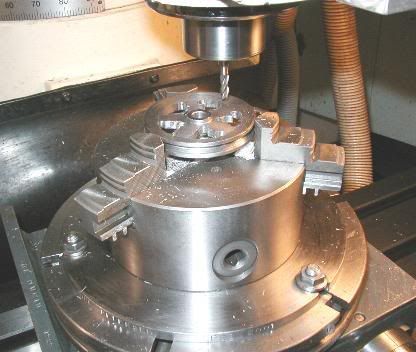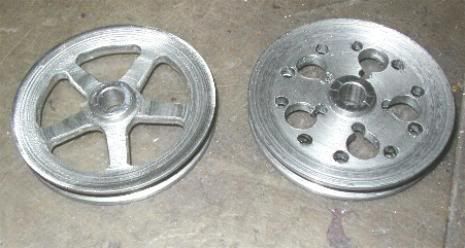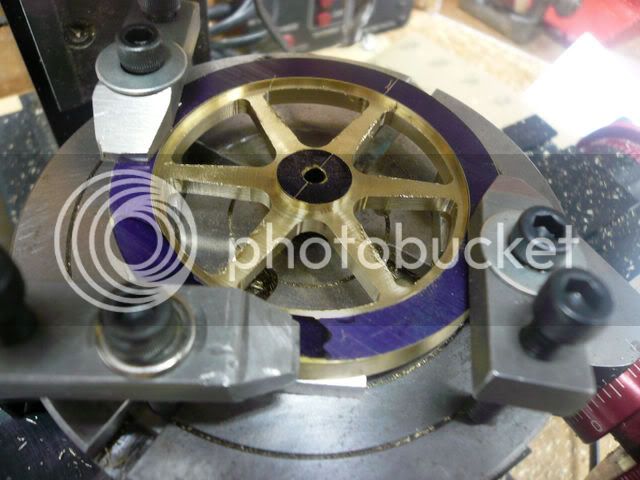Oldmechthings
Well-Known Member
- Joined
- Jan 10, 2008
- Messages
- 153
- Reaction score
- 12
Today I'm in the process of machining some spokes cable sheaves for the steam shovel. The operations are similar whether your making a sheave, a gear, or a flywheel. I thought that those new to the hobby might be interested in the process. These are fairly small being 2 1/2" diameter and 3/8" thick. First rough blanks were sawed from some plate steel, then blued and laid out. Under size pilot holes were drilled at what would end up being corners. A hole was drilled and reamed in the center. It will eventually be fitted with a brass bushing. Then the blank was put on a mandrel where the O.D. and sides were turned in the lathe. On this particular job I drilled a 3/8" hole in the center of each space after turning, just to hog out some metal. I don't always do that. Then the part is moved to a three jaw chuck on a homemade rotary table on the milling machine. The circular arcs are milled by simply turning the table and leap frogging over the spokes. The sides of the spokes are milled by traversing the mill table, and indexing the table the proper number of degrees for each spoke. Spokes are nearly always tapered from the hub out to the rim. These sheaves have a 6 degree included taper. That needs to be taken into consideration when setting up, but is easy enough to do with the rotary table.


The first picture shows a sheave in the process of milling the spokes, and the second picture shows two sheaves. One after turning, but before milling, and the other one after the spokes have been milled. The spokes come out rectangular in shape, and the could be rounded of with a radius cutting mill, but it is hard to find a cutter the right size to fit those tiny spaces. So I just use a file, and within a couple minutes can have the corners rounded enough to look ok. The rounding is cosmetic anyway, so it does not matter if it is not perfect.
Try it you might like it.
Birk


The first picture shows a sheave in the process of milling the spokes, and the second picture shows two sheaves. One after turning, but before milling, and the other one after the spokes have been milled. The spokes come out rectangular in shape, and the could be rounded of with a radius cutting mill, but it is hard to find a cutter the right size to fit those tiny spaces. So I just use a file, and within a couple minutes can have the corners rounded enough to look ok. The rounding is cosmetic anyway, so it does not matter if it is not perfect.
Try it you might like it.
Birk






